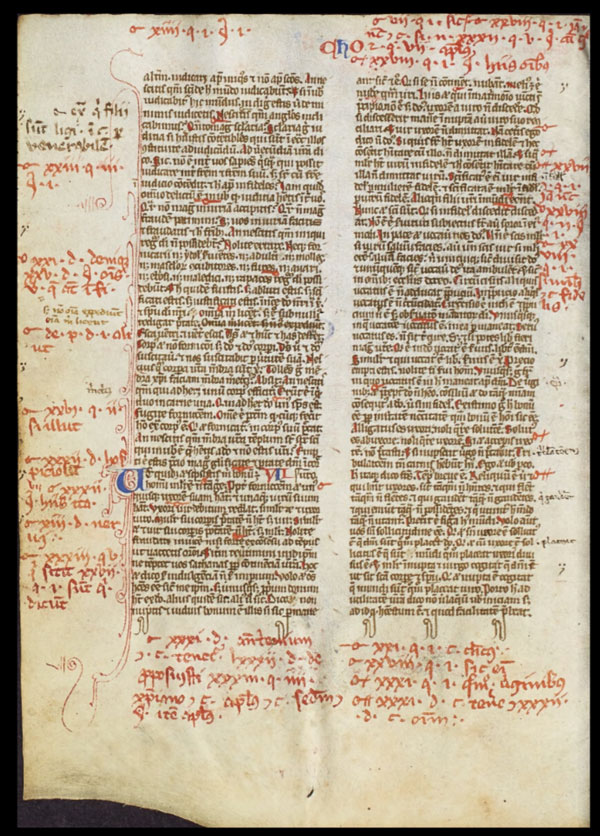
The oldest book in the University of Florida Libraries was one of the first in the fledgling university’s collection 100 years ago, but it was already ancient then.
The leather-bound New Testament was handwritten in Latin around 1250. That’s deep in the Middle Ages, before Marco Polo traveled to China, before we knew the Earth traveled around the sun. When the book was written, the Inca and Mali Empires thrived. The Crusades raged. Istanbul was Constantinople.
Written in black and brown ink on sheepskin parchment, the book is presumed to have passed through three Italian libraries in the fifteenth, sixteenth and seventeenth centuries, then traveled to Scotland, finding a home in Edinburgh’s Signet Library.
Somewhere during its journey through medieval Europe, several people wrote notes in the margins of the book. The notes in brown ink are mostly Roman numerals, but the writing in red — which, from the style of the letters, seems to be from the fourteenth century — is mysterious.

Some of the scribbles seem to be words, but they’re illegible. Others form a cryptic code of repeating letters. On the second-to-last page is a list of letters next to corresponding numbers.

Is it the key to a secret code? No one knows. You can try to decipher it — or just admire this ancient and irreplaceable book — by exploring the digitized version, which was created due to demand from libraries, students and researchers from around the world.
Want to get a closer look? The book is available to view on request at the Harold and Mary Jean Hanson Rare Book Collection in Smathers Library East.